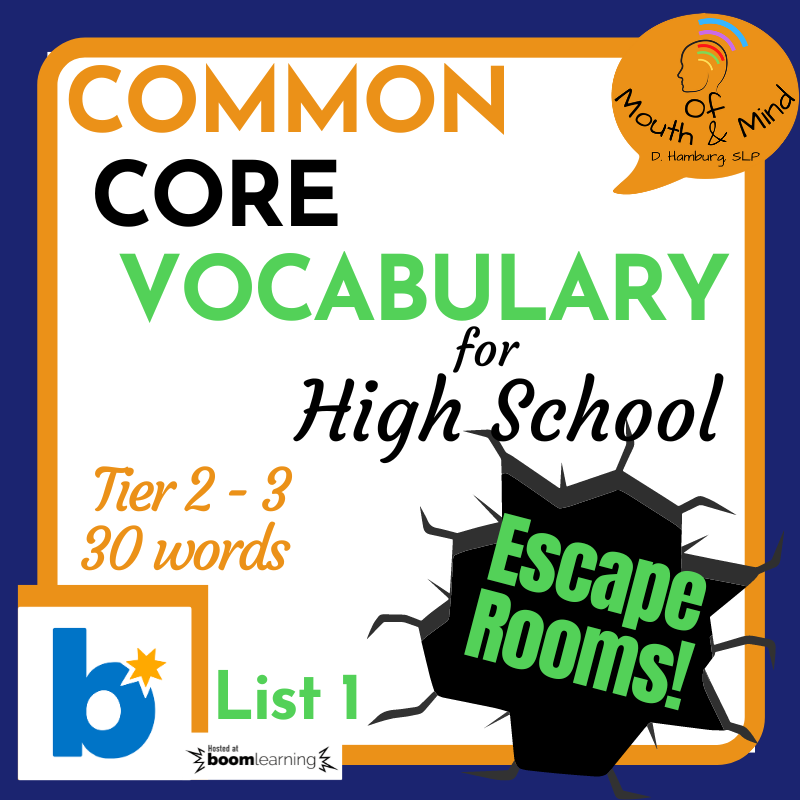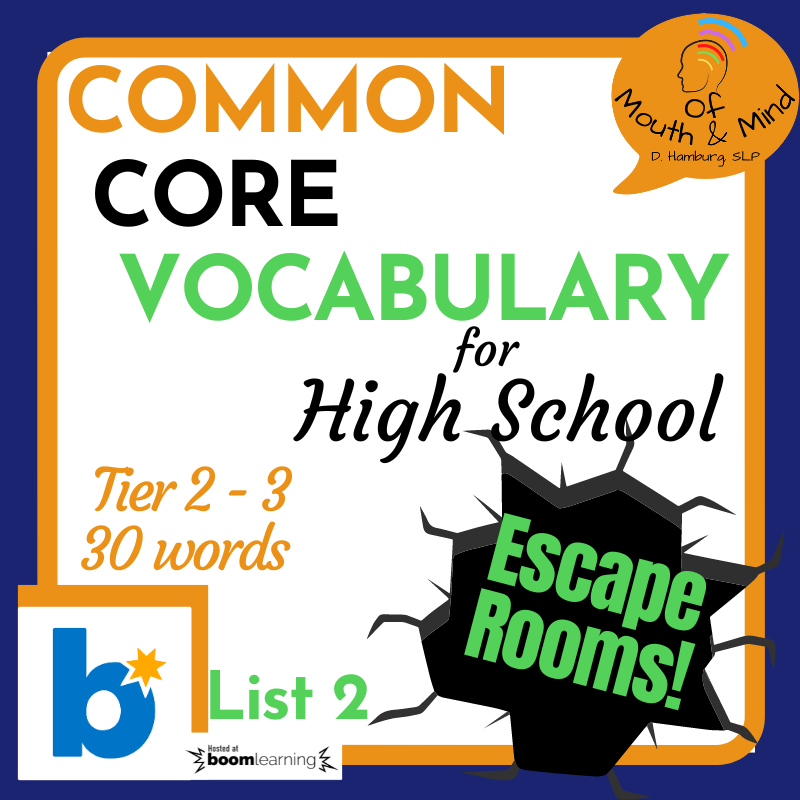Teaching Common Core Vocabulary in education is the difference between comprehension and misunderstanding. It can be the difference between academic proficiency and educational limitations. Do I dare say, maybe even the difference between social-emotional competence and limited self-esteem or social withdrawal? Think about the impact on students who are unable to access knowledge of academic vocabulary words for not only educational but also occupational purposes. Thus, common core vocabulary instruction cannot be emphasized enough.
Tier 2 & Tier 3 Words
Common Core Vocabulary are Tier 2 and Tier 3 words essential for understanding standards-based instruction and assessment. Tier 2 words contain the academic vocabulary often written or found in informational texts. Tier 3 words pertain to specific areas of information or fields of study. Often, we might assume that children learn meaning from text or simple explanations but that is often not the case with children having language deficits. Explicit teaching of specific vocabulary is necessary. Making these vocabulary words accessible and meaningful for students takes time and effort. To process and store standards-based vocabulary, our students’ brains require an efficient automatic memory system (Sprenger). So, which words and how to teach them is the question we should be asking ourselves to give our students the best chance at standards-based content and assessment.
Teaching Vocabulary
I have researched several common core vocabulary lists and selected 90 words for high school students to incorporate into speech-language therapy resources. The vocabulary selected are generally abstract (cognitive) verbs such as “integrate”, meaning they are actions that are non-motoric. These words are often found in the common core state standards, in assignments as well as assessments.
Additionally, several reasearch-based (Sprenger) metacognitive strategies for teaching vocabulary are incorporated into these resources. Metacognitive strategies empower students to learn the “process of learning” and become life-long learners. These strategies support development of academic language, especially language not typically learned through daily conversation. Mastery and automaticity with these types of words allow students to focus on the accuracy of their work rather than sifting through meaning before they can even begin.
Resources
I have created common core vocabulary resources for high school students on the Boom Learning Platform. Each of these Boom ™ Cards decks has 100 cards with several activities incorporating metacognitive strategies. Also, escape rooms are embedded throughout the decks for added motivation and fun.


Resources:
Liben, D. (Winter 2013). Which Words DO I Teach and How? Excerpted from the Significance of Vocabulary in the Common Core State Standards for ELA/Literacy. https://achievethecore.org/content/upload/Liben_Vocabulary_Article.pdf
Sprenger, M. (Sept 18, 2013). Edutopia. 11 Tips on Teaching Common Core Critical Vocabulary. https://www.edutopia.org/blog/teaching-ccss-critical-vocabulary-marilee-sprenger
